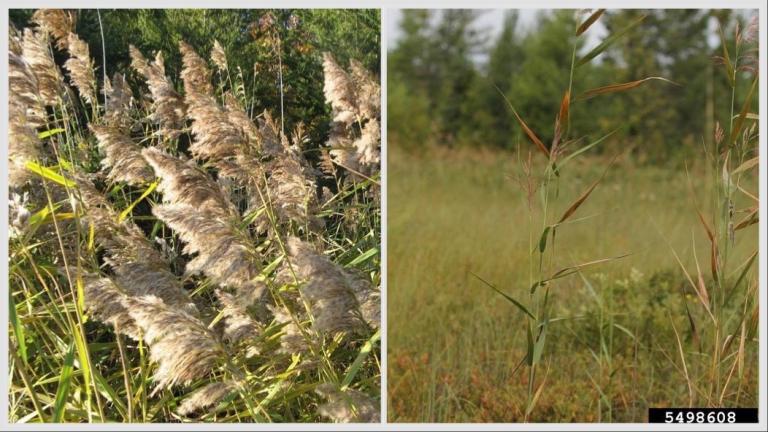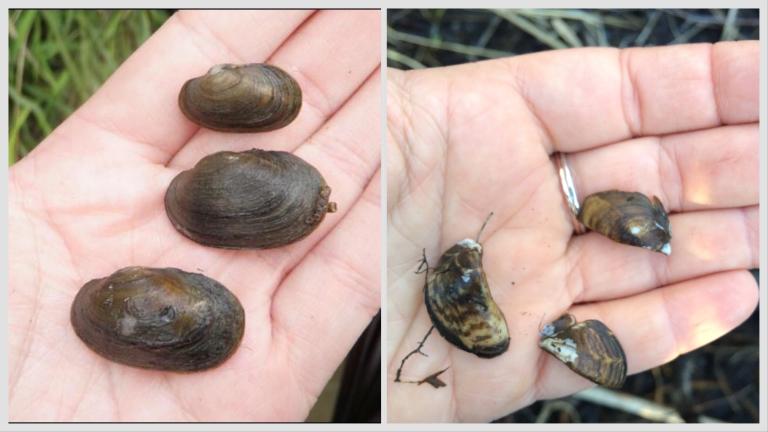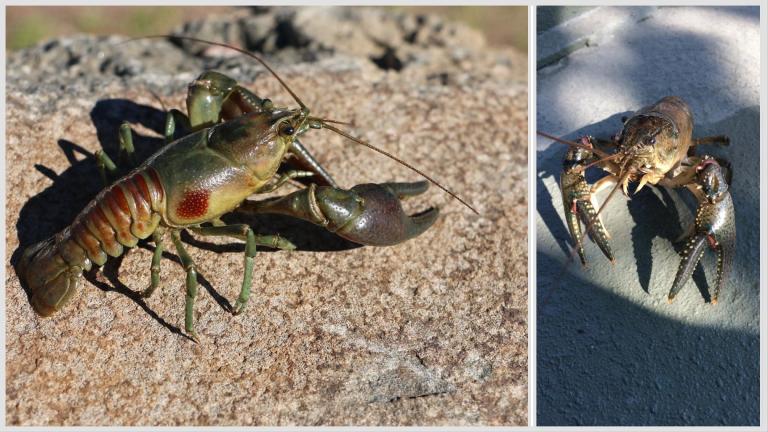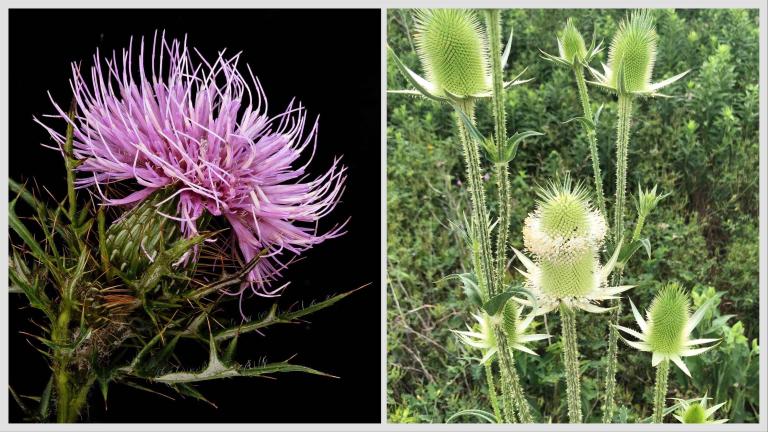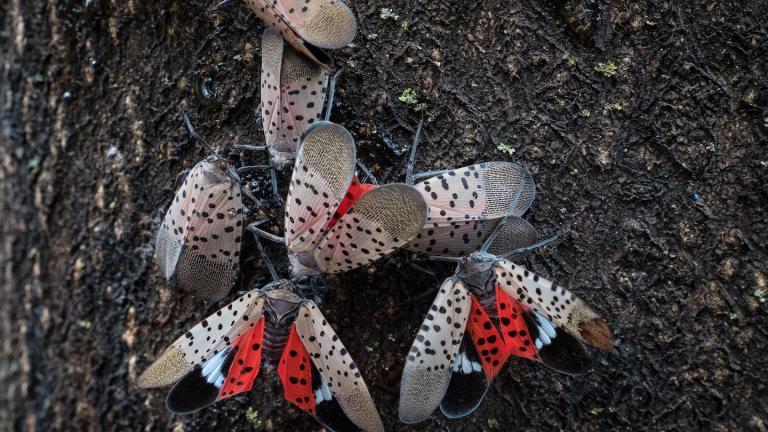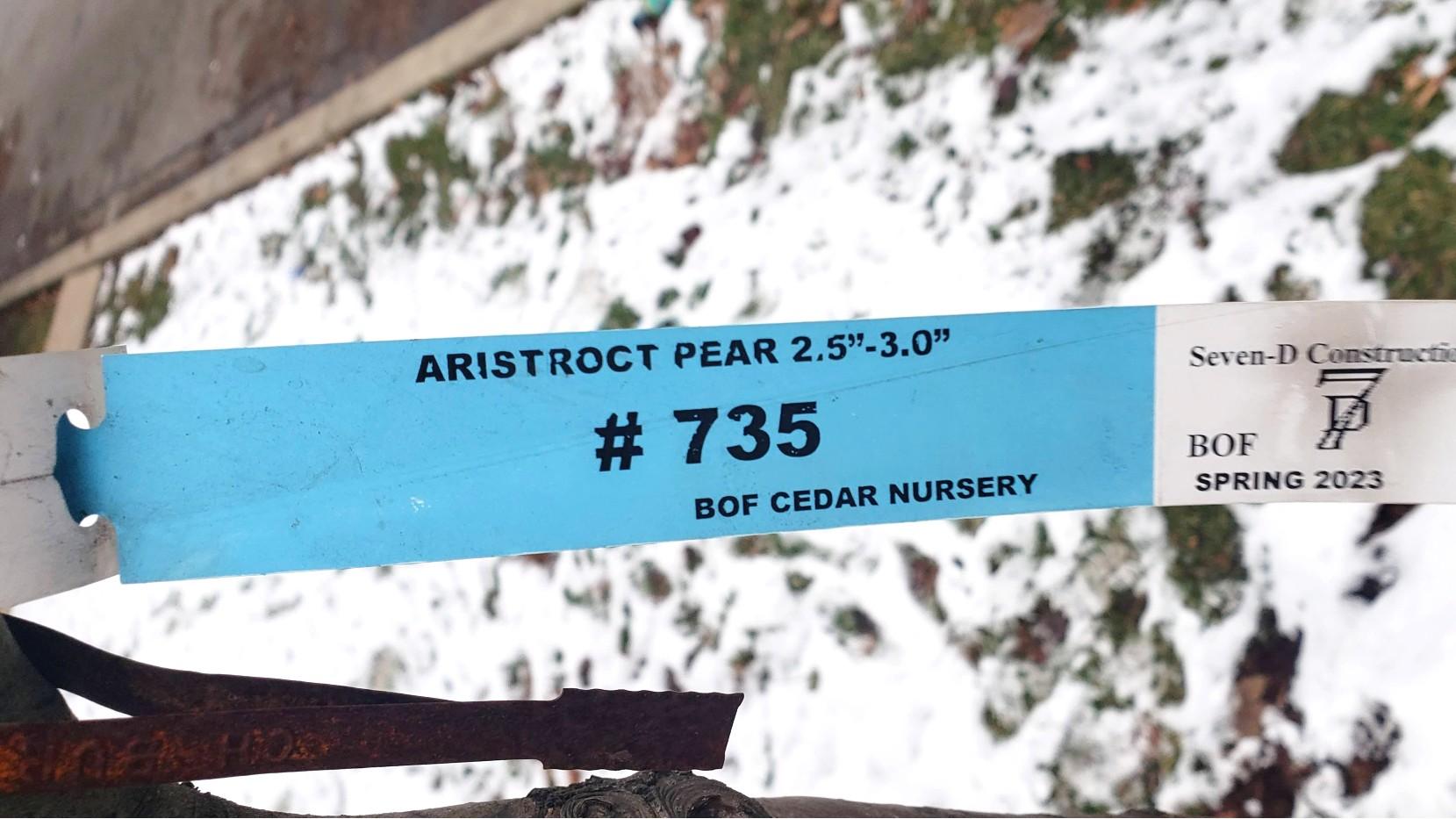 The tag on a Chicago resident’s new parkway tree clearly shows the species as “Aristocrat” pear, one of some two dozen cultivars of the invasive callery pear tree. (Courtesy of Eliza Rohr)
The tag on a Chicago resident’s new parkway tree clearly shows the species as “Aristocrat” pear, one of some two dozen cultivars of the invasive callery pear tree. (Courtesy of Eliza Rohr)
Two years ago, Eliza Rohr requested a parkway tree through the Our Roots Chicago program, launched in 2021 under former Mayor Lori Lightfoot.
After a couple of bureaucratic snafus — including the city closing out Rohr’s request even though no tree had been delivered — she was thrilled when a crew showed up outside her Belmont Cragin home last December.
“I went out and asked, ‘What are you doing?’ They said, ‘We’re planting a tree,’” Rohr recalled, to which she responded, “Oh, great!”
That excitement would quickly turn to dismay.
“They left and I went outside, and I looked at the tree tag. It said ‘Aristocrat pear,’” Rohr said.
She typed the name into a search engine and when the results popped up, she immediately dialed her alderperson’s office, which had helped her get the tree in the first place.
Now Rohr wanted it gone: “I said, ‘I don’t want an invasive tree.’”
The Aristocrat, it turns out, is a cultivar of the callery pear, often called the Bradford pear. Once a popular ornamental, callery pear, which is native to China, is now spreading out of control across the U.S., threatening natural areas and dominating native species.
Rohr’s search results turned up tidbits on callery pear including: It was listed as “not recommended” by the Morton Arboretum, was no longer planted in cities such as New York and had been outright banned in several states, including Ohio.
But, as Rohr learned, just because a plant is known to be invasive doesn’t mean it’s technically been labeled “invasive.”
Her Aristocrat was selected by city foresters from an area nursery as one of the 23,000 parkway trees planted by Our Roots Chicago in 2023.
It’s still grown, sold, bought and planted — legally — in Illinois.
Callery pear’s ability to thrive in harsh conditions, like parking lots, made it popular with landscapers (l). That same tenacity has made it a major threat to natural areas, where the tree can quickly dominate native species (r). (Credits: Leslie J. Mehrhoff, University of Connecticut, Bugwood.org (l); James H. Miller, USDA Forest Service, Bugwood.org)
Illinois hasn’t updated its Exotic Weed Act, which regulates plants of concern to natural systems, since 2015. (The Noxious Weed Law regulates plants of concern to agriculture.) Callery pear is not included among the roughly two dozen plants, or families of plants, covered by the Exotic Weed Act, under which it’s illegal to buy, sell or distribute any of the species listed.
After a five-year hiatus, Illinois’ Invasive Species Council re-formed in 2020. In late 2022, the council’s Terrestrial Plant committee announced 10 plants under review for consideration as invasive. Callery pear made this roster.
The committee spent a year conducting intense assessments of the plants under review, taking into consideration everything from a plant’s volume of seed production to its dispersal to whether it is regulated elsewhere to how difficult it is to manage, according to Chris Evans, co-chair of the committee.
The assessments have been completed and will be presented to the full council, but, Evans noted, the council solely serves in an advisory capacity. Even if the council finds a plant invasive, any change to the Exotic Weed Act has to be made via an amendment introduced and approved by the Illinois General Assembly.
It’s a clunky process, particularly given the acceleration of invasive species introduction and spread, and there’s a movement afoot to make the process more nimble, he said.
At the same time, the Midwest Invasive Plant Network (made up of nine states, including Illinois, plus Canada’s Ontario province) is focusing its efforts on standardizing regulations across the region.
“That’s a group whose mission is to work together and dissolve boundaries in terms of knowledge,” said Evans, who is vice president of the group. “A problem in Indiana is probably likely to be a problem in Illinois, so we can share resources.”
None of these processes is moving quickly enough to make a difference in Rohr’s case.
She was disappointed with the city’s response to her complaint about being stuck with an invasive — essentially, it’s not banned so it can still be planted — saying, “While technically this is true, it does not make it right and seems to be counterproductive.” It also raised the question, she said, of whether the city was more concerned with quantity than quality when it came to Our Roots.
Her dissatisfaction eventually led her to Evans, whom she contacted via email.
It was an exchange Evans, who’s a University of Illinois Extension forestry and research specialist, couldn’t have imagined taking place early in his career.
“Twenty-some years ago when I started, even at that point there was a lack of understanding about invasives within even land management people — professionals, departments of natural resources — and that’s certainly changed,” Evans said. “And now we’re absolutely seeing this broader recognition with the public. I do think we’re seeing a big increase in awareness, and I think that’s a great thing.”
On Rohr’s behalf, Evans reached out to his contacts at Streets and Sanitation’s Bureau of Forestry. The upshot of that communication is, going forward, Chicago will no longer plant callery pear.
Nor will the city issue permits for the planting of pear trees, and as existing pear trees age and die the city will not be replacing them, a spokesperson for Streets and Sanitation confirmed to WTTW News.
Though the city is not required to remove pear trees, “the Bureau of Forestry is prepared to replace the resident’s (Rohr’s) tree in the next planting cycle if desired,” the spokesperson added.
While official wheels continue to turn slowly regarding regulating invasives, Evans said the public can play a role in getting species out of circulation.
“If you’re worried about invasive plants that are still for sale, absolutely tell a nursery, ‘Hey, I don’t like that you’re selling this plant, I really want a native or at least a non-invasive alternative,’” Evans said. “I think the more they hear that, they’re going to act.”
Contact Patty Wetli: @pattywetli | (773) 509-5623 | [email protected]

